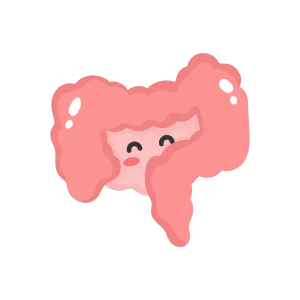Sialorrhea explained

Have you ever drooled while you slept? As much as we won’t admit it, pretty sure we all have done that before. In babies, drooling is quite common and occurs until they’re about two years of age. This in particular because they haven’t quite developed full control of the muscles around their mouth.
So, you might think “Okay, so babies drool and sometimes grown ups do too while asleep”. But there’s more to it than just that. There are cases where adults and children have excessive saliva flowing out of their mouth even when they are not asleep. Pretty bizarre isn’t it? It is a condition known as hypersalivation, ptyalism or sialorrhea where the saliva goes beyond the lip margin.. Read on to know more!
How does it happen
While the exact pathophysiology is not well defined, it is thought that hypersalivation, likely an excessive production of saliva, occurs due to having a poor swallowing mechanism and inability to retain saliva in the mouth.
They are classified into two types, namely anterior and posterior sialorrhea. The former occurs when there is saliva clearly spilling out of the mouth while the latter when saliva spills through the oropharynx and into the hypopharynx.

However, sialorrhea can be temporary or permanent depending on the cause. For example, drug-induced sialorrhea with certain anticonvulsants, pregnancy and infections can precipitate sialorrhea. Once the condition resolves, there will no longer be excessive drooling.
Etiology
Affecting both children and adults, the causes of this pathologic condition can be either systemic, local or physiological.
- Systemic
-
- Neuromuscular/Sensory dysfunction
- Cerebral palsy
- Parkinson’s disease
- Motor neuron disease (ALS)
- Stroke
- Neuromuscular/Sensory dysfunction
- Medication S/E
- Antipsychotics (clozapine)
- Tranquillisers
- Anticonvulsants
- Toxin exposure
- Mercury vapour
- Pesticides
- Snake poisoning
- Infection
- Rabies
- Gastric
- GERD – Water brash
- Local
-
- Oral inflammation
- Teething
- Oral inflammation
- Anatomic
- Head & neck surgical defects – Andy Gump deformity
- Macroglossia
- Dental malocclusion
- Orthodontic problems

- Infection
- Tonsillitis
- Dental caries
- Oral cavity infection
- Physiological
-
- Pregnancy
The after effects
While it may not seem like a big deal to those in a good health condition, sialorrhea actually causes unwanted consequences to the individual. Generally, speech impairments, difficulty in swallowing and dehydration can be seen in the patients. In the long run, excessive saliva can also lead to bad breath, increased calculus formation on the teeth and irritations of the skin. These all are accounted for anterior sialorrhea.

On the other hand, posterior sialorrhea may cause aspiration pneumonia and some experience chronic sleep disturbance due to the saliva accumulation. Chronic cough and hoarseness of the voice are local effects on the pharynx and larynx of the individual. Some may even experience day time fatigue or somnolence.
But in both cases, the psychosocial effects remain the same. Individuals especially children tend to have a lowered self esteem, feeling of isolation and have communication difficulties. Their caretakers need to be vigilant as the excessive saliva requires them to change clothes often or can even lead to damage of electronic devices.
Can it be treated
Sialorrhea does not have a concrete treatment guideline as patients do not usually present with hypersalivation alone. More often than not, it occurs as a result of an underlying condition as mentioned above. Hence, its management is very much individualised to the patient’s condition.
That being said, there have been guidelines mentioning the use of anticholinergics such as glycopyrrolate and hyoscine hydrobromide whether as an injection or transdermal patch respectively. Some like the Atropine eye drops are also used off-label in its management. The management will definitely be in the best interest of the patient’s well-being, which is why pharmacological agents are used initially before deciding on invasive options such as surgical removal of salivary glands or radiotherapy.
In conclusion, there is no single perfect treatment for the management of sialorrhea as it all boils down to using a combination of therapies to produce the desired result. Should there be any reversible causes, they should be addressed before deciding to take on the invasive treatment options.
References
- Bavikatte, G., Poh, L., & Hassoon, A. (2012). Management of Drooling of Saliva. British Journal Of Medical Practitioners (BJMP), 5(1). Retrieved 10 July 2022
- Adadan Güvenç, I. (2019). Sialorrhea: A Guide to Etiology, Assessment, and Management. Salivary Glands – New Approaches In Diagnostics And Treatment. https://doi.org/10.5772/intechopen.82619
- National Health Service (NHS). (2017). Pharmacological Management of Hypersalivation in Children and Adults [Ebook] (1st ed.). Retrieved 10 July 2022, from https://www.panmerseyapc.nhs.uk/media/2066/hypersalivation.pdf.
- HOCKSTEIN, N., SAMADI, D., GENDRON, K., & HANDLER, S. (2004). Sialorrhea: A Management Challenge. American Family Physician, 69(11), 2628-2635. Retrieved 10 July 2022, from https://www.aafp.org/pubs/afp/issues/2004/0601/p2628.html.







